American analysis of Iranian armed forces
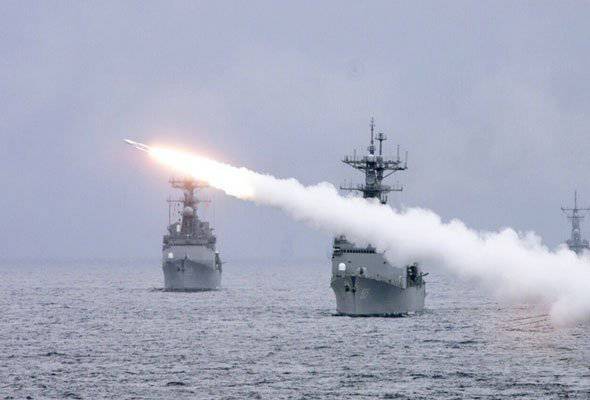
Most effective weapons Iran in the region are its anti-ship missiles, which allow you to remotely hit surface targets, while remaining low-vulnerable from enemy fire. The following paragraph gives an overview of them from the smallest to the largest.
C-701 and their derivatives
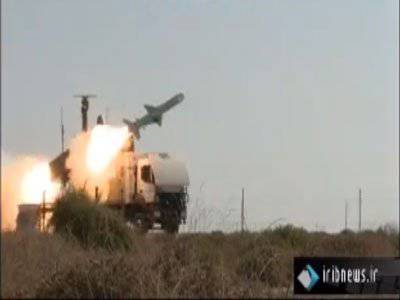
These are small air-to-surface missiles designed in China to attack small vessels with a displacement of less than 200 tons. The rockets are subsonic and have a short range of flight - no more than 20 kilometers, but their low altitude, less than 20 meters, and the constantly developing guidance system, guarantee high accuracy of hit - over 95 percent. Apparently, China produces a special version with an improved guidance system for the foreign market, which is called the C-703. Iran independently produces another version developed for launching from a land carrier (and possibly from sea-going vessels) under the name Kowsar. With further improvement of the guidance system, Iranian officials say that this version of the missiles will be able to withstand electronic interference. Because of its short range, this family of missiles outside the borders of Iran should be placed either on aircraft or launched from a seagoing vessel. All this requires a certain degree of air superiority to ensure their sustainable use during a military conflict.
Kowsar was most likely the weapon used to defeat INS Hanit in 10 nautical miles from Beirut in 2006. The Israeli corvette (more than 1000 tons tonnage) was seriously damaged, but remained afloat. The controversial aspect of this event was that the automatic missile defense systems on board the corvette were turned off, so it remains unknown how successful Kowsar can overcome this kind of protection.
C-704 and Nasr-1
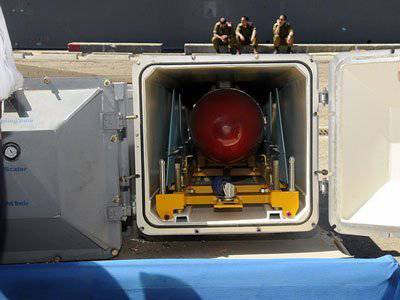
This is the older brother of the C-701, with similar speed, cruising altitude and accuracy. The main difference is its size, which makes it possible to deliver a kilogram weighing 130, which is 4 times as large as C-701, and thus may be a threat to ships with a displacement of up to 4 thousand tons. Another difference is the range, which is over 30 kilometers. The main feature of the rocket may be its low cost compared to other weapons that can attack vessels of the same displacement. The number of units acquired by Iran from China remains unknown.
In 2008, Iran successfully launched a self-built Nasr-1 rocket, which seems to be a modified version of the C-704, with a more powerful warhead (150 kilogram) and a slightly longer range. Iranian newspapers, quoting official sources, argued that Iran is currently producing them in droves; how many missiles were produced is still an open question.
The relevance of this class of short-range missiles gives their number. Although it is difficult to find exact figures, some reports indicate the presence of more than 300 units at the beginning of the 21 century, even before Nasr-1 and Kowsar entered production.
C-601 and other silkworm class missiles
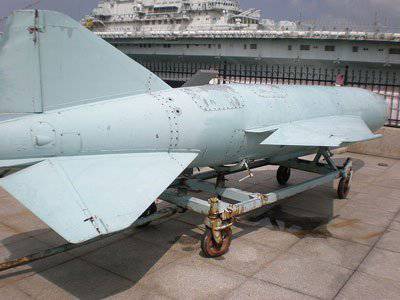
This is a class of very large rockets developed in China based on the original Soviet design. During the Iran-Iraq war, the Chinese sold them to both sides. Typically, these missiles carry a half-ton warhead and have a range of over 150 kilometers. Early versions of the missiles did not differ in accuracy (the probability of hitting about 70 percent) and today have little chance against modern defense systems. China continues to supply an improved version of these missiles (C-201) to the Middle East; in 1998, the sale of these weapons to Iran officially ceased, but today Iran has the ability to produce them independently.
C-802 and Noor
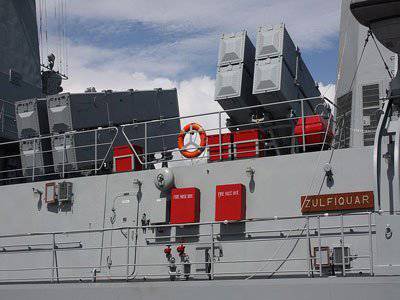
C-802 rockets are high-precision long-range missiles developed in China. This 2-speed rocket with a cruising speed just below the 1 Mach (speed of sound), in addition, the autopilot can reduce the altitude below 10 meters with a calm sea. The rocket is very resistant to electronic interference and has a low radar visibility; missile accuracy is in excess of 98 percent. It carries a 165-kilogram warhead capable of hitting shipboard armor. Having a range of 200 kilometers, the C-802 is a dangerous weapon, providing its owner with serious military prospects.
In 1991, Iran ordered 150 C-802 from China. Shipments in the 1996 year, after the 60 missiles had already been delivered, stopped under US pressure, indicating the importance of these weapons.
Despite the suspension of shipments from China, Iran managed to develop its own version of this rocket, called Noor, in which improvements may have been made. Their number is unknown, but it is known that this weapon was produced for several years. This is one of the tactical issues of the Strait of Hormuz: how many Iran’s Noor missiles are and how accurate they are.
SS-N-22 Mosquito
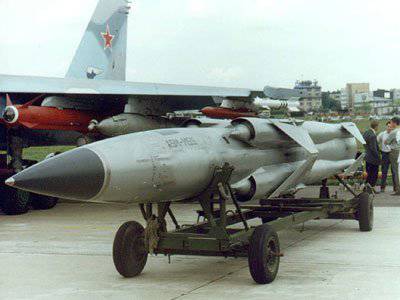
This is the most important naval weapon available to Iran. Originally called the Mosquito, these missiles were developed by the USSR during the end of the Cold War, created specifically to overcome NATO missile defenses. First, the rocket is very fast, accelerates to 3 Mach at high altitude and to 2.2 Mach at the surface; at maximum speed, it can cross the Strait of Hormuz in less than a minute. Secondly, it can change the course according to a random law as it approaches the target, thereby making it very difficult for the automatic defense to calculate its trajectory. This is a large rocket that weighs 4,5 tons, capable of delivering a 320 kilogram warhead; its distance in different sources is indicated differently, but modern versions can reach a distance of 100 kilometers. This technology was inherited by Russia, which continues to improve it, producing more and more sophisticated versions. This family of missiles is usually called the most deadly existing naval weapon with a probability of hitting more than 99 percent.
Visiting Moscow in 2001, the Iranian defense minister was quite impressed with the demonstration of these missiles in order to order for their army a non-disclosed number. Iran, of course, has this weapon, but in what quantity and which versions it remains unknown. Was the order in 2001 alone? Or was Iran continuing to buy them?
In the early years of the last decade, when it became known that Russia was selling these missiles to China, India and Iran, there were suggestions that NATO did not have effective protection from them. By this time, they have been known for more than two decades, and of course NATO had the time to study them and come up with ways to protect against such weapons.
However, NATO forces in combat never confronted such weapons, and given the short distances in the bay, and the possibility that Iran uses several of them in a simultaneous attack, it would be very reasonable to assume that such missiles could cause serious damage.
Khalij Fars ballistic missile
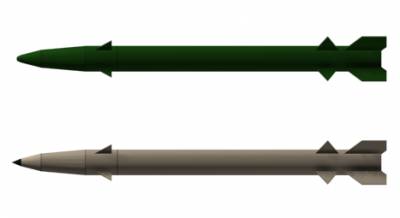
About a year ago, the Khalij Fars ballistic missile was officially presented to the press. It is capable of carrying an 650-kilogram warhead, has a maximum speed of more than 3 Mach, and a maximum launch range of 300 kilometers.
In addition to air missiles, Iran also has torpedoes, which are worth mentioning.
Torpedo hoot
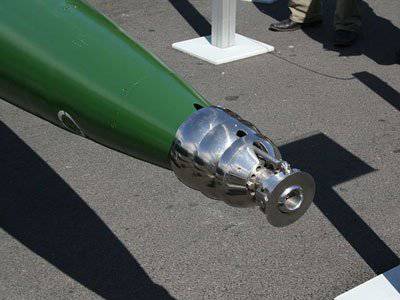
This is another weapon that demonstrates Iran’s ability to produce weapons. Hoot is a supercavitational torpedo, which means that it goes its way under the water in a gas bubble, which significantly reduces friction. It is much faster than any torpedo used by NATO, and can reach speeds up to 200 nodes (370 km / h; note mixednews), which complicates the task of protecting against it. It is very reminiscent of the Squall, a defensive torpedo developed in the Soviet Union, which is still being produced in today's Russia; but in this case there are no reports that Iran has ever acquired the original. Claiming that he developed his own design completely independently, Iran successfully tested these independently built rockets. Despite its impressive speed, uncertainty remains regarding the effectiveness of these torpedoes. Its range should be relatively small, and it should be noisy enough to detect it already at launch. As with all weapons manufactured by Iran, the number of such torpedoes in service may be the main threat.
Navy
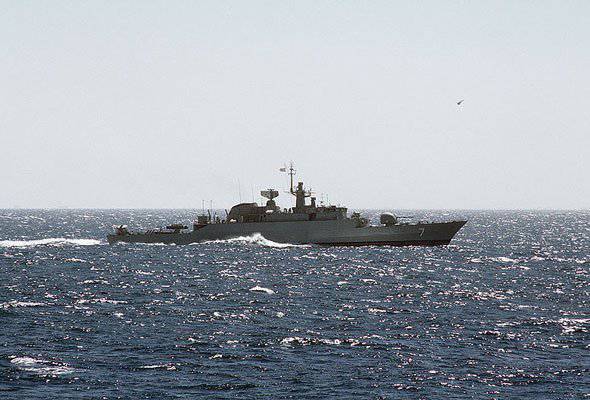
Part of Iran’s anti-ship weapons requires placement on warships, so the Iranian Navy is another piece of the puzzle.
Submarines
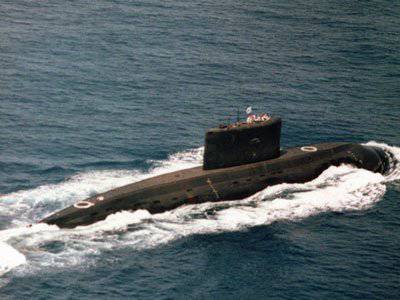
Iran’s main submarine fleet consists of ultra-small submarines. This class of ships was originally thought to be used for penetration operations, but they found a different role in the Strait of Hormuz and the Persian Gulf. Their small size allows them to maneuver in the shallow waters of the northern shore of the bay, and also complicates their detection by sonars. In recent years, Iran has built Xhumir 17 class submarines that can carry Hoot torpedoes. Add to this the old submarines of the Yugo class, built by North Korea according to Yugoslav drawings. In shallow Iranian waters, these small vessels will be difficult to detect, and they are able to deploy minefields and launch torpedoes without being instantly detected.
At the beginning of the 1990s, Iran acquired the Kilo-class submarines from Russia, the 3. They are about twice the size of Ghadir submarines, and are designed specifically for anti-ship operations in shallow water. They are built using special tiles that distort and absorb sound, making it difficult to detect them with sonar at large distances.
Rocket ships
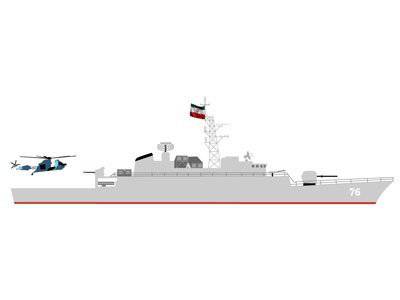
These are small and fast offensive ships conceived for coastal operations. Iran has 10 type ships Houdong, built in China, and capable of being equipped with large-sized 8 rockets. At the end of 1970, Iran ordered Kaman-class 12 gunboats, of which ten are still in service. In recent years, Iran has been able to build copies called Sina type boats. These 14 small ships carry 4 launchers of mid-size anti-ship missiles each.
Speedboats
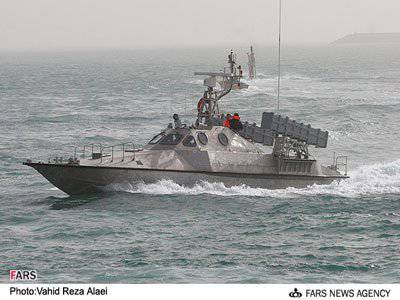
These are very small ships with two torpedo tubes. To become effective, they need to come relatively close to their goal, rather than seriously substitute themselves under the fire of the enemy. In terms of efficiency (both when approaching for an attack and for a waste maneuver) they rely on speed. Iran has over 70 boats of type Peykaap, some of which are self-produced boats and 10 Tir units. Both of these models are reported to have a maximum speed of over 50 nodes (over 90 km / h). A newer version, Peykaap-II, is equipped with two rocket launchers.
In 2012, Iran launched 12 combat boats, inspired by high-speed sports vessels that can reach speeds of up to 70 nodes (around 130 km / h). Named Zolfaqhar, besides torpedoes, they can carry two small rocket launchers for Kowsar missiles. The Iranian authorities told the press that the mass production of such high-speed boats began in 2011; the exact number of boats of the Iranian Navy remains unknown.
Other ships
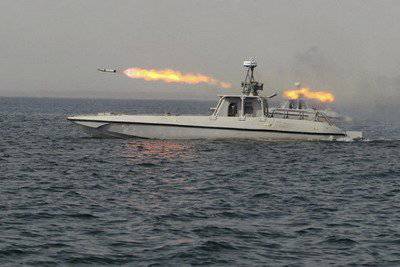
Iran has several large ships that can also use anti-ship missiles. They themselves are fairly easy targets, so their role in armed conflict is uncertain. In recent years, Iran has built three frigates based on the construction of three frigates purchased by Britain before the revolution; To this can be added three corvettes, acquired in 1960's. Iran also has 6 patrol boats, 2 minelayers, 14 hovercraft, and over 20 landing craft. He also has more 80 coastal patrol ships of various sizes, some of which are built by Iran itself.
Air force
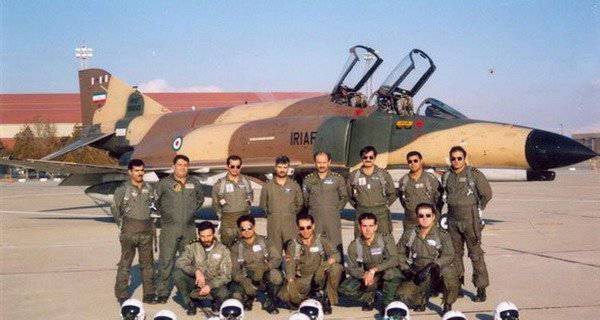
Anti-ship missiles can also be placed on aircraft, and Iran has a fairly long list of aircraft that are suitable for this. In addition, the Air Force can also play a critical role in protecting the Iranian Navy and its shores from NATO air forces. The following is a very concise listing by category:
* Air superiority - 60 or more fighter jets, including 25 recently updated MiG-29, -25 or more F-14 Tomcat and 10 Mirage F1.
* Multipurpose tactical fighters - more than 150 jet fighters, of which 140 are F-4 and F-5 1960-s fighters, plus an unknown number of Saeqeh aircraft (a copy of F-5).
* Air Defense Fighters - Chengdu J-20 Fighter 7.
* Air support - Su-13 jet assault attack aircraft 25.
* Assault aviation - 32 Su-24s plus an unknown number of Azarakhsh (the first attempt by Iran to copy the F-5; in development since 1997).
* Helicopters - more than 50 vehicles of various designs and purposes, mainly built in the United States before the revolution.
Along with this, there are some remarkable models:
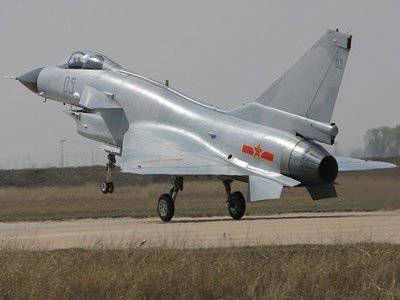
* Chengdu J-10 is a modern multipurpose fighter produced in recent years in China. With a maximum speed of more than 2 Mach, range of about 2500 km and being very maneuverable, this fighter is quite able to withstand such NATO combat aircraft as F-18 fighters. In the field of aircraft without stealth technology, this is one of the best options in terms of technology for the money that exists on the market at the moment. Iran acquired two squadrons (24 units), which were delivered between the 2008 and 2010 years.
* Chengdu / PAC JF-17 Thunder is a multipurpose fighter developed in China in accordance with the specific requirements of the Pakistani Air Force. With an operational range in 1300 km, and a top speed in Mach 1.6, this aircraft is not as powerful as the J-10, but it is much cheaper. Iran ordered an unidentified number of these fighters from China in 2003. Due to customer requirements, China has renamed this version of jet fighters to FC-1. Their production began in the 2006 year, and since then little has been known about them.
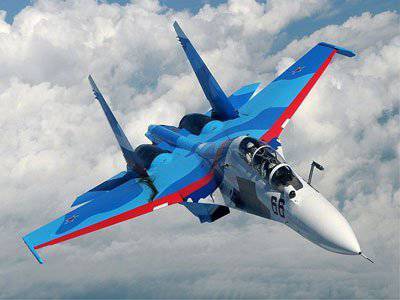
* Su-30 - appeared as a Soviet response to the American F-15E Strike Eagle; developed at the end of the Cold War, it was conceived primarily for missions to obstruct the actions of the enemy. With a range of about 3 thousands of kilometers and a maximum speed in Mach 2, this fighter is capable of hitting any other modern military aircraft. A few years ago in the Israeli media appeared news that Iran ordered the 250 of these fighters from Russia; this order has never been confirmed by other sources, and such volumes should have caused more attention. In 2008, Israeli journalists again claimed that Su-30 squadrons were watching during Iran’s military exercises, and again these statements were not confirmed by anyone. Although it seems unlikely that Iran has hundreds of such aircraft, it seems possible that military vehicles could be among all military equipment. If Iran has at least some significant number of them, say, at least two squadrons, the military operation in the region will be completely different. This is one of the main mysteries on the Strait of Hormuz chess board.
Defense
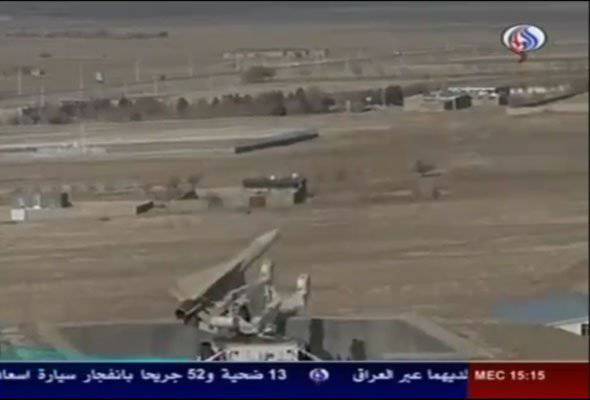
Completes the list of Iran's significant weapons air defense. It can be used to determine how well Iran can defend its military forces on the coast of the Persian and Oman gulfs.
Mersad, Shahin and Shalamche
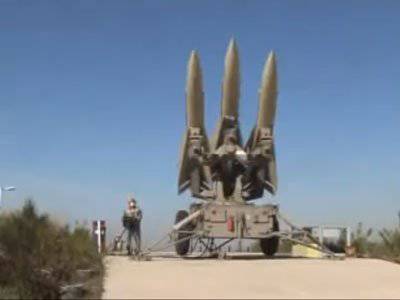
In 2010, the Iranian authorities, with the occasion of their solemn demonstration, announced the start of mass production of Mersad defense systems. This is a fully digital radar and monitoring system associated with the Shahin launch site. This rocket is also produced by Iran, which has updated the American Hawk rocket, increasing the range and increasing the maximum height that the rocket can reach with a maximum speed in Mach 2.6. The development of this system was continuous during the 2011 year, after which the new version of the rocket was successfully tested. Named Shalamche, the rocket has a maximum speed of Mach 3 and a launch range of 40 kilometers; it is capable of hitting a target located in 30 kilometers in less than 30 seconds.
C-300 and Bavar-323
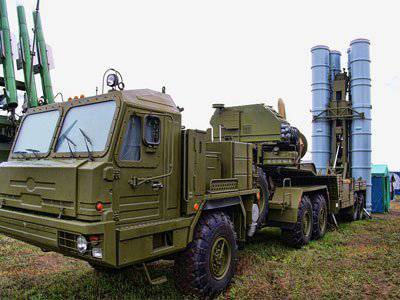
The C-300 is an up-to-date air defense system originally developed by the USSR in the 1970s. The system was inherited by Russia, which continues to further develop and improve it, and sells it to many customers around the world. In essence, the system is a semi-trailer transport truck with a radar, a fire control subsystem and a set of ground-to-air missiles. Modern versions of the system can track up to 100 targets, be it airplanes or cruise missiles, and attack simultaneously 12 targets within a radius of 150 kilometers. After a lot of assumptions about a possible deal between Iran and Russia, both sides in 2009 confirmed the imminent start of deliveries. A year later, Russia froze all arms sales to Iran within the framework of a UN resolution, and supplies were not completed. How many systems were delivered, and whether they were delivered at all, was not disclosed, but we can say for sure that the possible supplied number is not sufficient, since Iran immediately began developing its own version. Iran later claimed that it had acquired several additional units from Belarus and from another unidentified seller. There are rumors about the acquisition of such systems from Libya.
Following the fiasco with the original deal, Iran began to develop its own version of the air defense system. Focusing on his experience in the construction of short-range and medium-range systems, Iran was able to complete the first Bavar-323 prototype last year. Up to this point, the serial release of the system has not been announced.
S-200 and Fajr-8
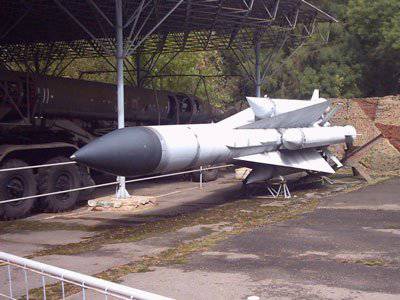
Another ancient system, developed in the USSR and sold to Iran, is now produced by itself. Russia is constantly developing a system that consists of a radar, a control system, and a launching missile system. Modern versions of the systems can shoot 7-tonnage missiles at a distance of up to 300 kilometers, at an altitude of up to 40 kilometers, and can fly 7 times faster than the speed of sound. Iran has for years produced its own version called Fajr-8, about which almost nothing is known, except that this is an improved version of C-200. With a possible military scenario in the Strait of Hormuz, these missiles may not play an important role, but they can provide Iran with the opportunity to protect itself from an air attack at high altitude.
In addition, Iran also has a multitude of ground-to-air missiles, partly acquired from Russia and China, partly in-house. They range from small hand-held anti-helicopter anti-aircraft missiles to air defense systems with large missiles designed to hit targets at long ranges. The number of most of them remains unknown.
Summary
Most of Iran’s military equipment is outdated, and many obsolete pre-revolutionary systems are in operation. Iran has been studying how these technologies can be redesigned and replicated for years, and now has a significant number of such systems in service. These home-grown technologies are often publicly demonstrated at military exercises and praised by Iranian politicians and the military. Some of these weapons are quite dangerous, in particular, ultra-small submarines capable of operating in shallow water. Others, like high-speed boats with rocket armament, largely remain a “dark horse.” These simple technologies are a serious danger if they are presented in large numbers. And maybe Iran will allow for some time to withstand the military onslaught in the strait.
And there are still many modern systems acquired in recent years from Russia and China. As for them, open information about this remains scarce, and sometimes even contradictory, since many transactions are conducted in secrecy. The number and characteristics of these technologies in most cases remain unknown, which hinders a clear understanding of the true military power of Iran. Is this uncertainty just a part of Iran’s attempt to create an image of greater military power that it actually possesses? Or is it part of a strategy to protect arms purchases from the West? In any case, the few types of weapons available to Iran, like Mosquito missiles, C-300 air defense systems, or J-10 fighter jets, are enough to discredit any idea of the immediate superiority of NATO forces over Iran.
Information